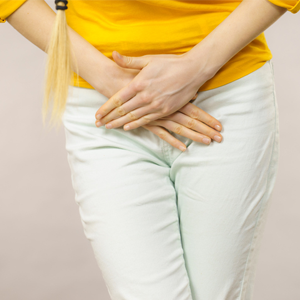Should I Continue Using Vaginal Yeast Cream While on Period

There are tons of options for treating yeast infections, regardless of where you are in your cycle.
Few things feel worse than having a yeast infection (a cursed health issue) when you're on your period – that deep, invasive itch you can't scratch is extra uncomfortable when it's coupled with achey cramps and a whole lot of blood.
Even more annoying, the ways a person might typically manage menstruation – tampons, menstrual cups – might become untenably messy when you're dealing with a yeast infection, too.
So what's a person to do when a yeast infection strikes at exactly the same moment their period arrives?
Read more: Here's exactly how to skip your period every month
"There are tons of options for treating yeast infections, regardless of where you are in your cycle," says Dr Jennifer Conti, a clinical assistant professor in obstetrics and gynecology.
That's good news, as infections are exceedingly common. Typically characterised by intense itching, soreness and/or clumpy white discharge resembling cottage cheese, yeast infections result when the vagina's good bacteria – specifically, Lactobacillus acidophilus – are thrown out of whack, allowing the vagina's natural yeast to flourish.
Factors that can tip that delicate flora balance in yeast's favour include, according to the US Mayo Clinic, a compromised immune system; antibiotic use; uncontrolled diabetes; hormone therapy; and pregnancy, thanks to peaking oestrogen levels that can predispose people to yeast infections.
And while yeast infections are often attributed to menstruation shifting the vagina's pH, according to Dr Conti, that's a misconception.
In a healthy vagina, pH hovers between 3.5 and 4.5, fostering the growth of good bacteria and suppressing the overgrowth of infection-causing bad bacteria and yeast.
Blood, meanwhile, has a pH of around 7.3. While pH imbalance does contribute to bacterial vaginosis, which sometimes presents with a similar itch, Dr Conti explains that blood passing through the vagina once a month shouldn't throw off vaginal pH enough to trigger an infection.
Indeed, she adds, oestrogen levels are low during menstruation and blood might actually help flush out some of that yeast, providing relief.
Read more: 5 period symptoms that might signal a serious health problem
What might also make an insufferably itchy vagina feel better? Diflucan (fluconazole), an oral medication that often treats a yeast infection in one dose. Because it's a pill rather than a vaginal insert, Diflucan is likely the least messy and most convenient option for menstruating yeast infection sufferers, although it does require a doctor's prescription.
Unfortunately, the remedies that are widely available at pharmacies – like anti-fungal creams – might be less effective during a period, Dr Conti explained, "because it's hard to keep one fluid up there while another fluid's trying to come out."
And when it comes to containing menstrual blood, yeast infection sufferers can proceed as they normally would.
"It's totally fine to use tampons or pads if you're bleeding and also have a yeast infection," Dr Conti said.
The one thing you absolutely shouldn't do? Douche. Attempting to clean out the vagina with an over-the-counter hygienic product can imbalance pH such that an infection does develop. Plus, they're a waste of money: As Dr Conti put it, "The vagina can clean itself, thank you."
The bottom line: Yeast infections are super common and announce themselves with a few distinctive signs. But bacterial vaginosis could easily be mistaken for a yeast infection, as could trichomoniasis, symptoms of which include itching, irritation and white discharge.
If you have a vaginal complaint, it's always better to check in with a doctor if you can, rather than seek an internet diagnosis. That's true whether you're menstruating or not.
This article was originally published on www.womenshealthmag.com
Image credit: iStock
Source: https://www.news24.com/health24/lifestyle/woman/menstruation/how-to-treat-a-yeast-infection-on-your-period-20171128
0 Response to "Should I Continue Using Vaginal Yeast Cream While on Period"
Post a Comment